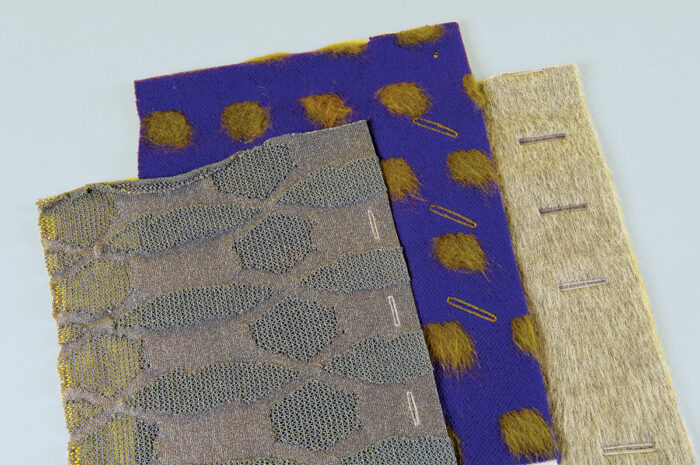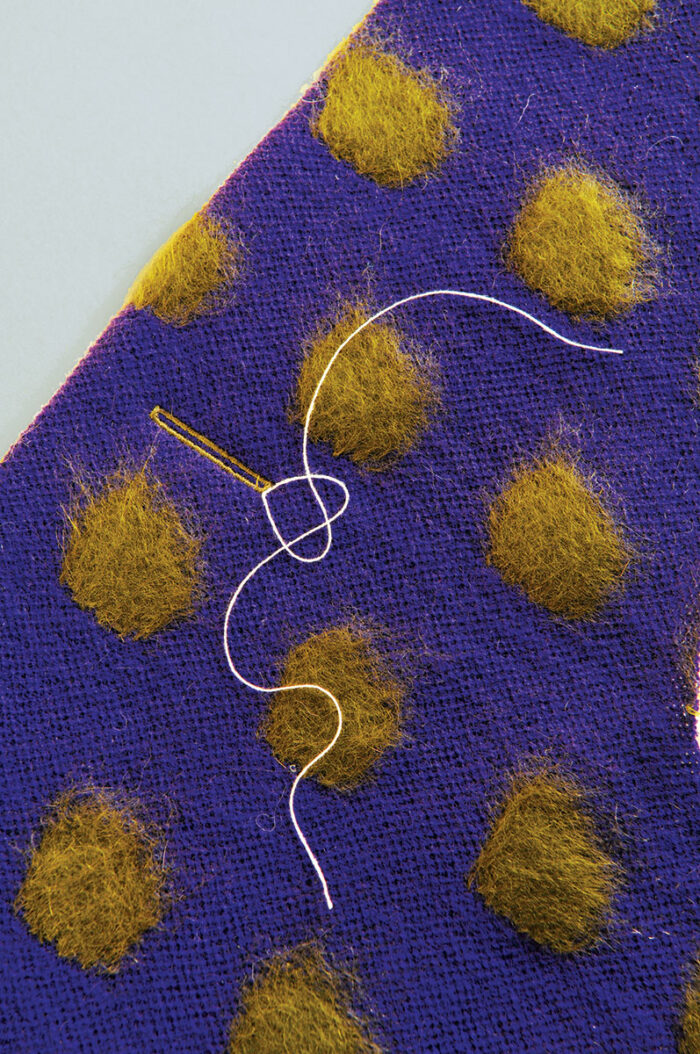
Closures can be tricky on stretchy, loose knits, but with the right support, you can add professional-looking buttonholes and smooth zippers that complement your knitwear designs.

Experiment for flat, attractive buttonholes
The tips below will help you sew buttonholes that resist stretching and distortion.
Sew a test buttonhole. Evaluate it for appearance, stability, and ease of stitching.
Add stabilizer. On a faced and interfaced edge, you might need no more than an extra patch of fusible interfacing on the wrong side of the buttonhole position.
Improve fabric feed. Thick or textured knits sometimes catch or bunch up under the presser foot during stitching. To keep things moving smoothly, lengthen the stitch, and apply temporary stabilizer (I like Solvy’s water-soluble version) to the bottom and/or top.
Cord the buttonhole. For buttonholes on ribbing or self trim, apply buttonhole twist or elastic thread as cording. Buttonhole twist provides complete stability and strength, but elastic thread enables the buttonhole to stretch. Test both to see which works better on your knit fabric. When the buttonhole stitching is complete, tie the cording ends together and bury them in the fabric near the stitch line. Then cut away the excess on the wrong side.

excerpted from Professional Finish for Sweater Knits in Threads Issue #147.





Log in or create an account to post a comment.
Sign up Log in